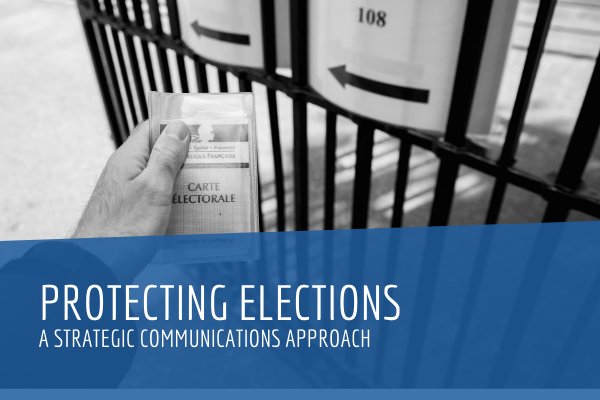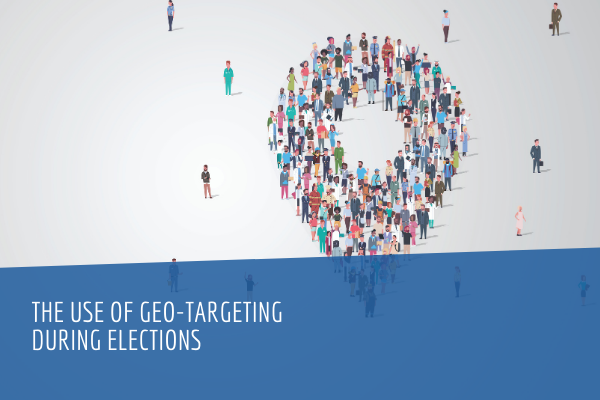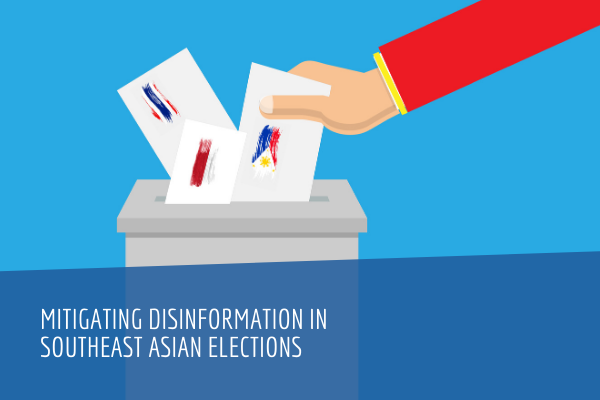About this report
This paper specifically focuses on the advantages of applying a strategic communications mind-set to dealing with these challenges. While election infrastructure, expectations of internal and external audiences, and the specifics of the security challenges at hand all differ across countries, our analysis suggests that acknowledging the existence of the issue, along with the steadfast determination of the authorities involved to ensure free and fair elections, makes it possible to roll out a comprehensive election protection program based on that same strategic communications mindset.
This paper also provides an overview of the strategic communications challenge concerning elections in democratic countries. It includes an election security analysis framework to be applied in the preparation of institutions, and it provides insight into the best practises that have ensured the conduct of free and fair elections in our four countries.
The awareness and recognition of the value of verbal and non-verbal communication as well as understanding communication through policies, actions and abstention allows governments to be strategic and efficient in achieving their national goals. This, however, requires the presence of the following elements:
Awareness of the processes and dynamics in the information environment, including: The ability to segment and differentiate audiences by information consumption habits, to identify different information platforms and channels, as well as actors in the information environment and their motivation.
Awareness of national strategy, based on values and goals uniting and binding society, including: The constitutional premise, what the country stands for, what the values and pillars are that the government’s institutions are expected to protect, and that civic groups are ready to stand for; policy declarations expressed through a government action plan or other public documents, developed and agreed based on legitimacy provided through the electorate.
Awareness of the communicative value of government policies and societal processes, including: The organisation of communication work in public institutions, attention devoted to communicating government policies; resources invested and the processes established to ensure the responsibility to communicate to public vs the option to do so.
Determination to align all the efforts with communicative value for reaching the overarching goal, including: The political priority assigned to the application and execution of a strategic communications mindset; involvement and cooperation of all the relevant government agencies, raising awareness on the role individual institutions and their actions of communicative value play in achieving the overarching goal.
Ability to lead the alignment and coordination process, including: A legitimate authority at the strategic level providing guidance through a strategic communication framework with a clearly defined and widely or nationally agreed strategic goal; well-established coordination processes and instruments that allow for the practical alignment of all relevant efforts.
Election security preparation starts with the mapping of the following StratCom dimentions:
1. Information landscape: What is the situation we are in, and what are we protecting?
a. Map the core elements of the information environment and the election process.
b. Identify elements affecting the decision-making of voters in your country.
c. Identify and prioritise what the most important things are you want to protect.
2. Threat assessment: What is the threat?
a. What does the current threat assessment look like, and what are the publicly recognised security risks?
b. What does the threat consist of?
c. How could activities that aim at influencing information materialise?
d. What are the likelihood and consequences of influence activities?
e. Which risks do we have to accept?
3. Risk and capability assessment: How do we handle the identified risks?
a. How can we reduce the probability of election interference?
b. How can we reduce the consequences of election interference?
c. What is our monitoring capability? (scope, stakeholders, mandate, task)
d. What are the deterrence mechanisms at our disposal?
e. What are the mechanisms through which we will coordinate our response?
Conclusions
A number of countries have taken significant steps during the past few years to safeguard their democratic processes. Important work that needed to be done, given the clear evidence of recent election interference.
Deliberate attempts to manipulate elections, electoral infrastructure and campaign information systems are a significant threat to our democracies which need to be actively combatted using all available means.
To effectively combat election interference in the future, the European Union, its member states and any democratic country determined to hold free and fair elections all need to be clear and outspoken on this, and issue clear statements to deter other nations and actors from interfering in their democratic processes.
Based on the experiences studied in this paper, we conclude that a checklist for other governments in their election security preparations focusing on exploring the StratCom perspective can be summarised as follows:
- Conduct comprehensive threat analysis and set your priorities;
- Focus on resilience building according to the threat analysis;
- Consider deterrence factors;
- Establish coordination and cooperation mechanisms;
- Establish early warning and detection mechanisms;
- Invest in education and training;
- Establish strategic communications framework - from deterrence to crisis communication.
Provided that the institutions and government offices concerned aim to collaboratively follow these principles, remain vigilant about the situation in information environment and establish effective cooperation with the non-governmental sector and media, these measures should ensure a decent level of resilience for election security.


